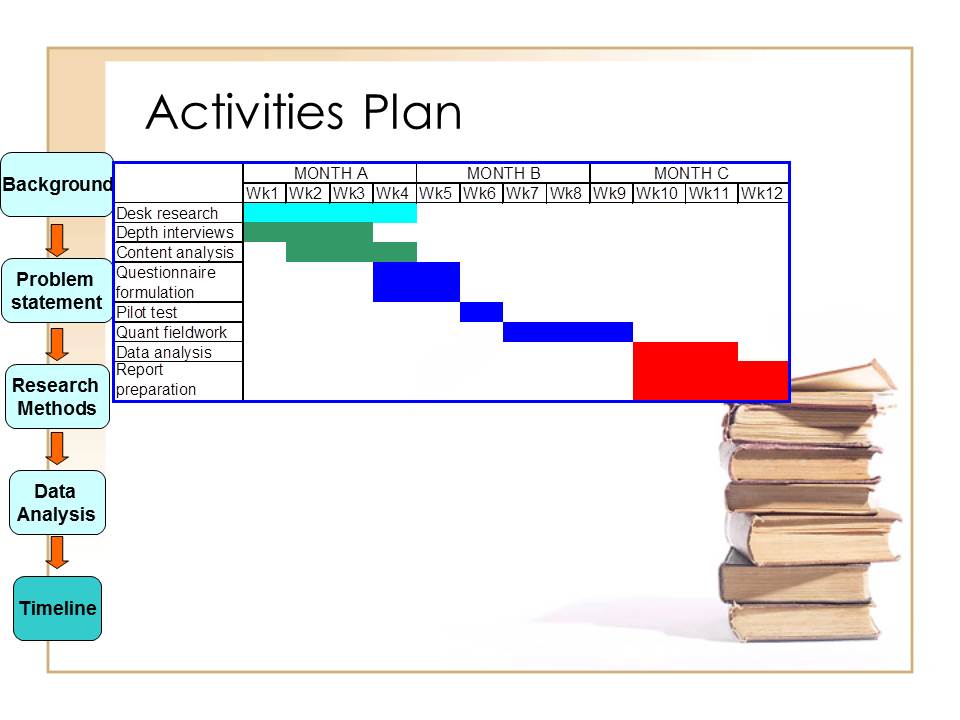The Situation
- KSA funds a total of 8 universities with 76 colleges;
- Public education commenced with King Saud University 1957;
- All are tuition-free;
- Even pay students a stipend;
- Competition has more appeal;
- Private universities in the Kingdom;
- Study abroad (UK, USA).
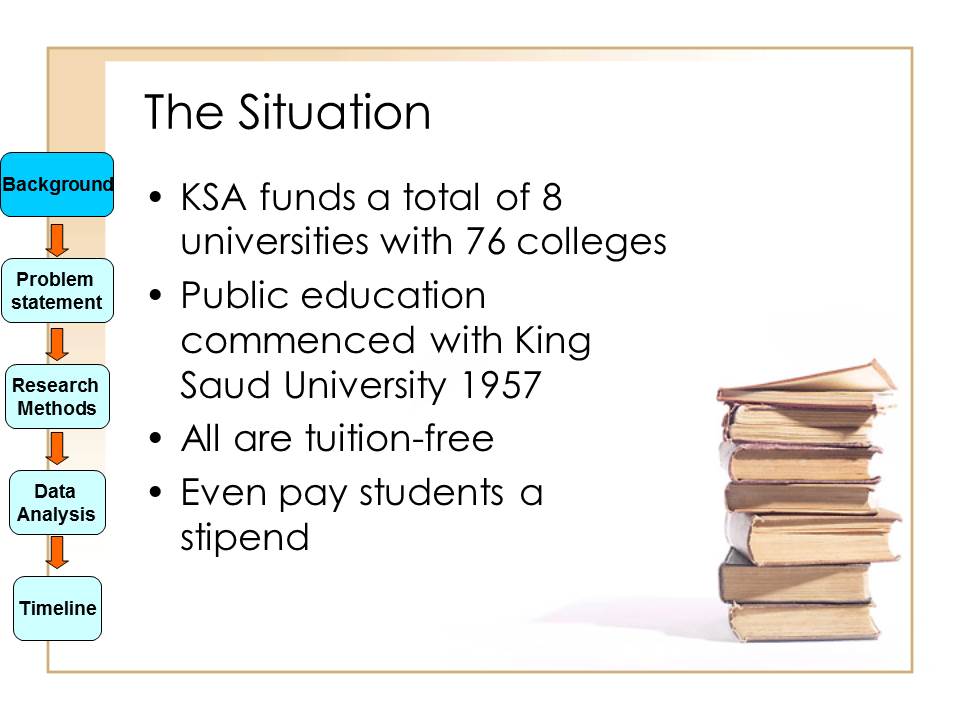

Problem Statements
- Why the mismatch?
- Proximity?
- Quality of instruction?
- Variety of course offerings?
- Versus preferred careers, occupations?
- Academic standards vs. performance in high school?
- Biases of decision-makers?
- Who decides?
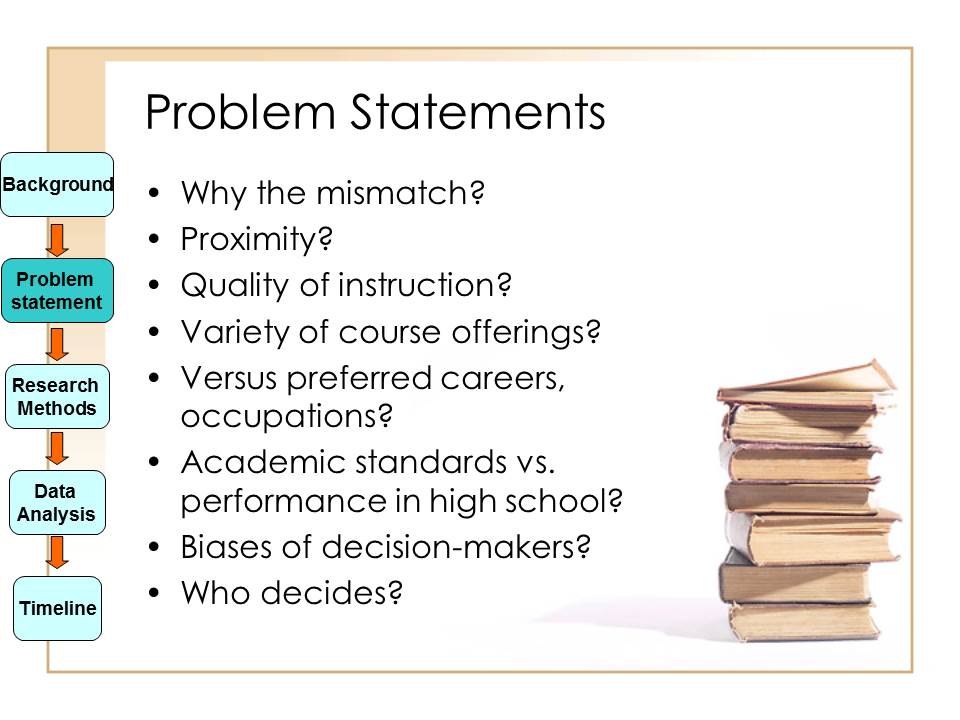
Research Objectives
- Determine if parents or children influence decision more.
- What criteria guided them:
- In choice of public university?
- To opt for local or foreign private university?
- What are the credible media, other sources of information?
- What are their preferred careers?
- What course of study will best prepare them for these careers?
- In general, what is the perception of academic standards at public and private universities.
- Or is the financial standing of the family the sole consideration for attending public university?

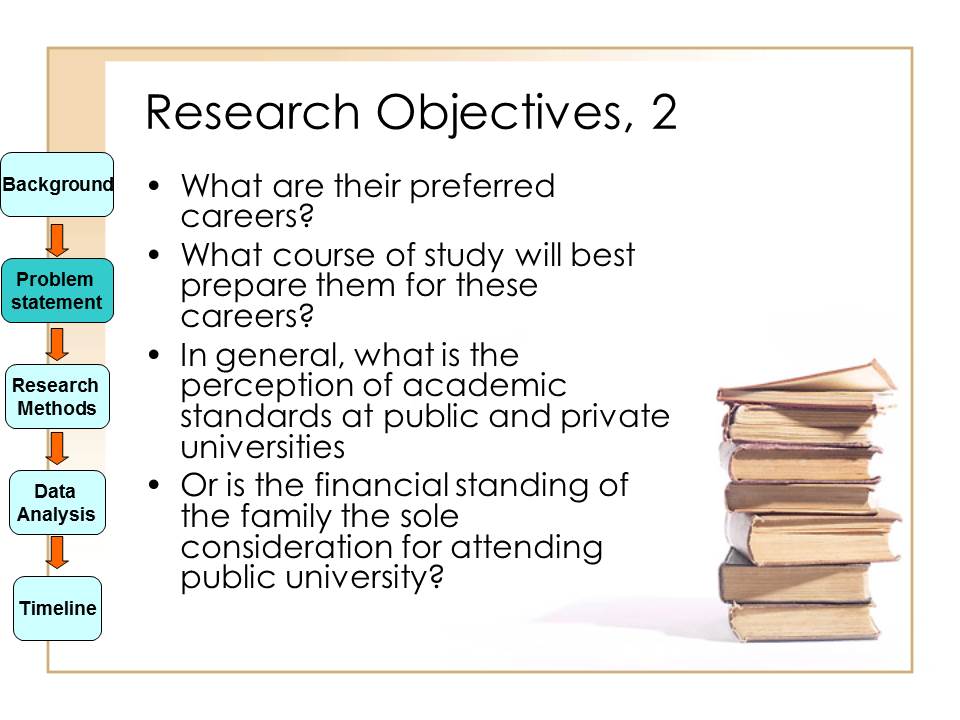
Statement of Hypotheses

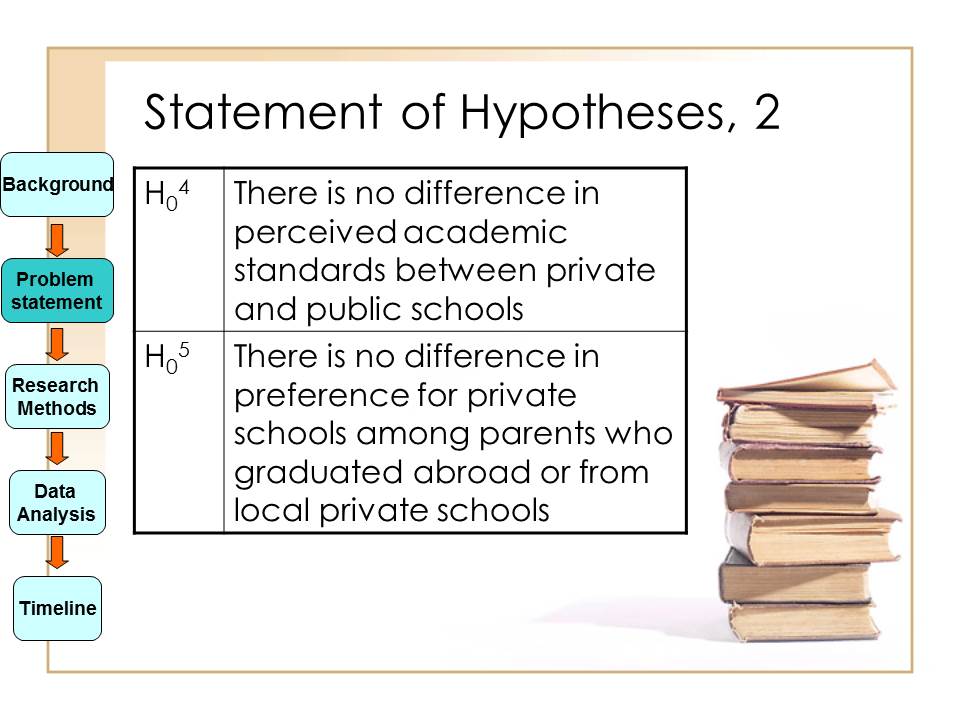
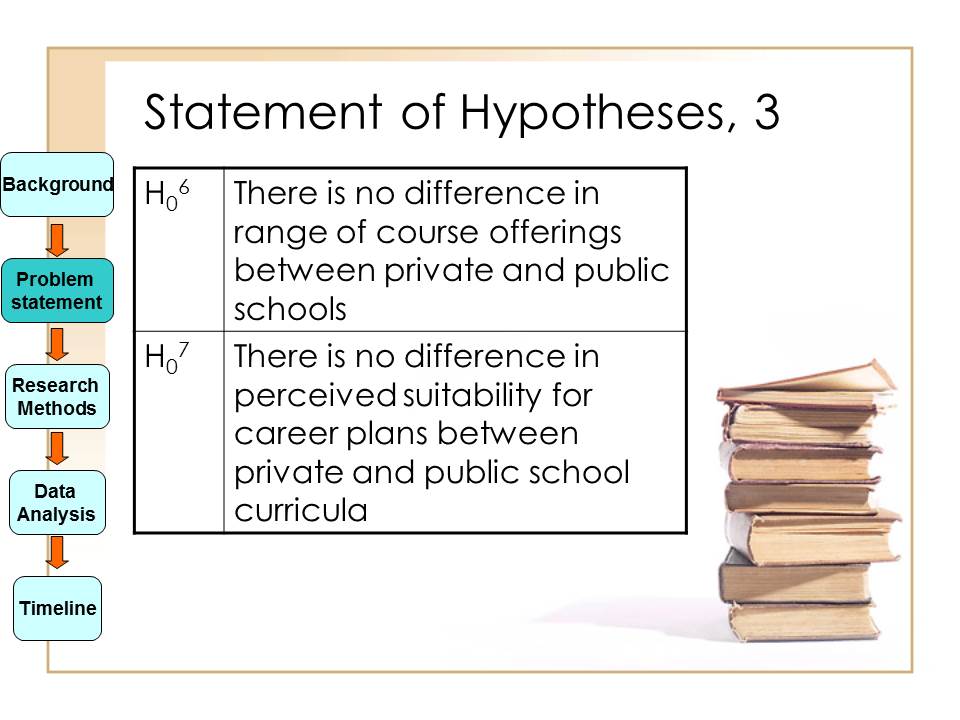

Methodology
- Mixed methods approach;
- Secondary/Desk research;
- Qualitative Depth Interviews for insight into decision-maker motivations;
- Quantitative Self-administered Survey:
- *To quantify motivations;
- And sources of dissatisfaction.

Sampling Frame
Qualitative:
- Convenience sampling;
- Best efforts at diversifying by city and family socio-economic status.
Quantitative:
- Systematic sampling;
- From the universe of all private and public school students.

Sample Sizes
- Qualitative: from 50 to 100 or until interviews no longer reveal new constructs;
- Quantitative: 1,000 respondents in order to suppress standard error of estimate to ± 3% for entire sample, given normal assumptions at 95% confidence level.
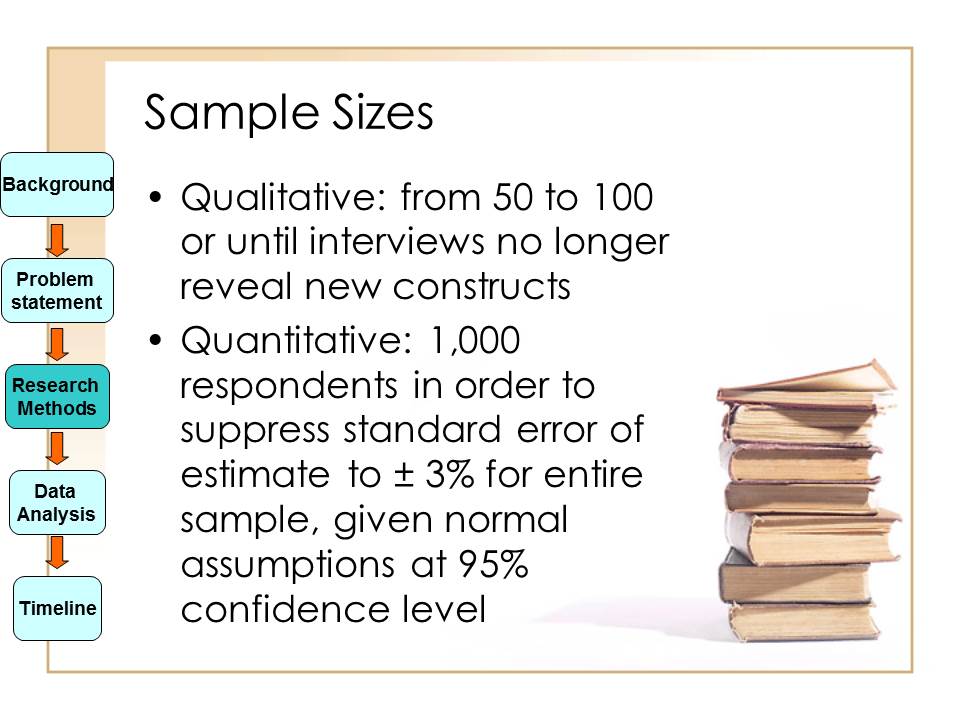
Breakdown of Quantitative Sample
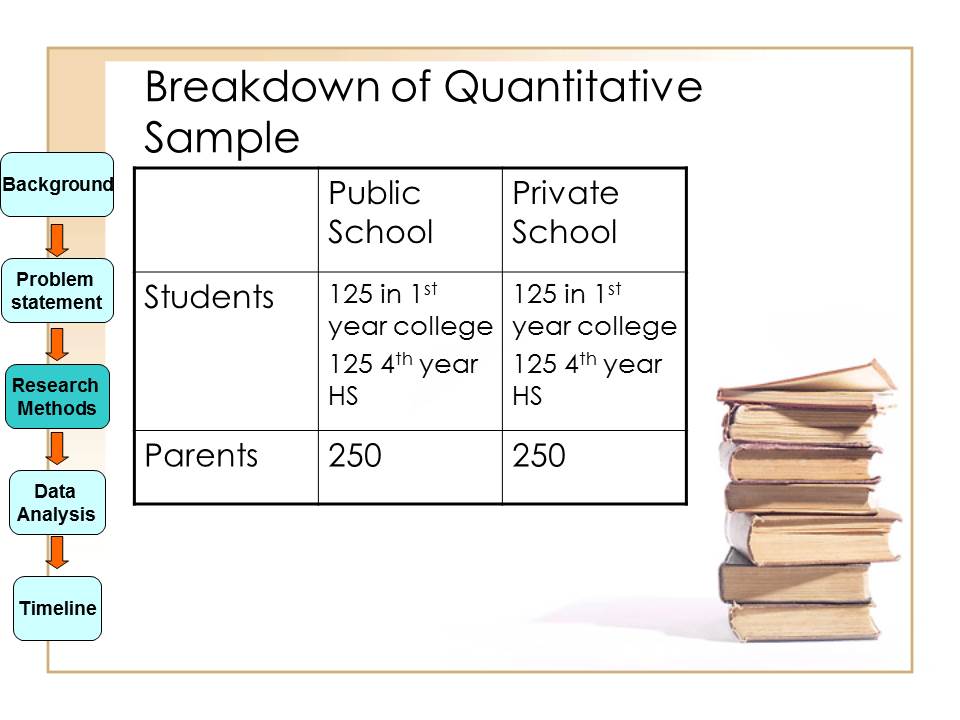
Data Analysis, Desk Research
Secondary data:
- Contingency tables and cross-tabs;
- Correspondence analysis.
To investigate differences between public and private university as to variety of course offerings and proximity to population centers.
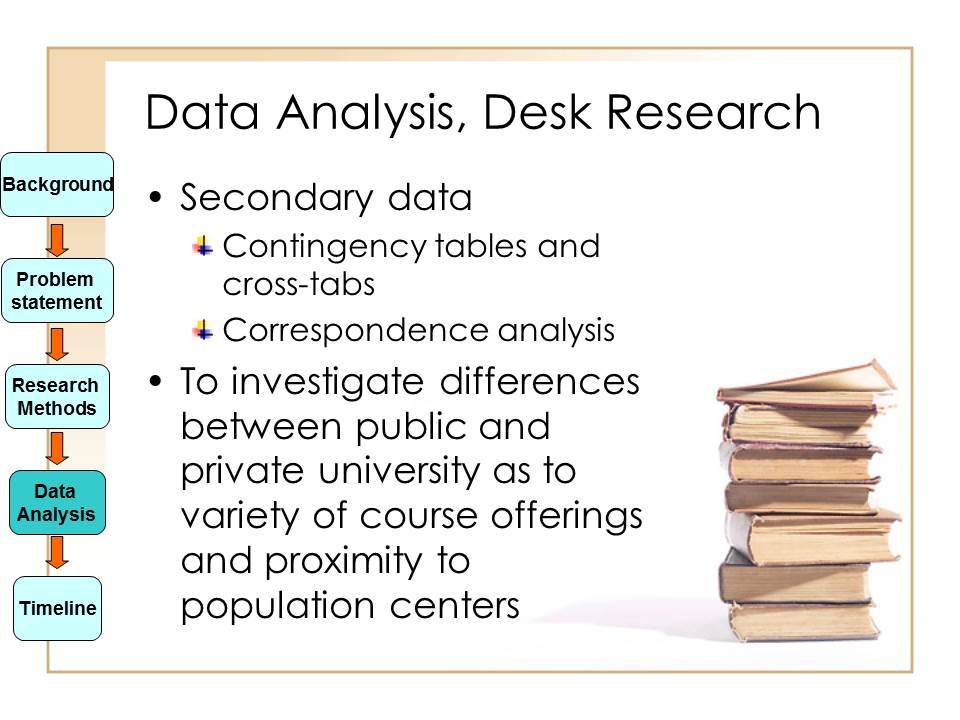
Data Analysis, Qualitative
Developing constructs:
- Transcription and encoding;
- Two-judge manual coding;
- Computer-aided coding.
Outcomes:
- Verbatim statements to illustrate depth of feeling;
- Constructs to inform formulation of survey questionnaire.
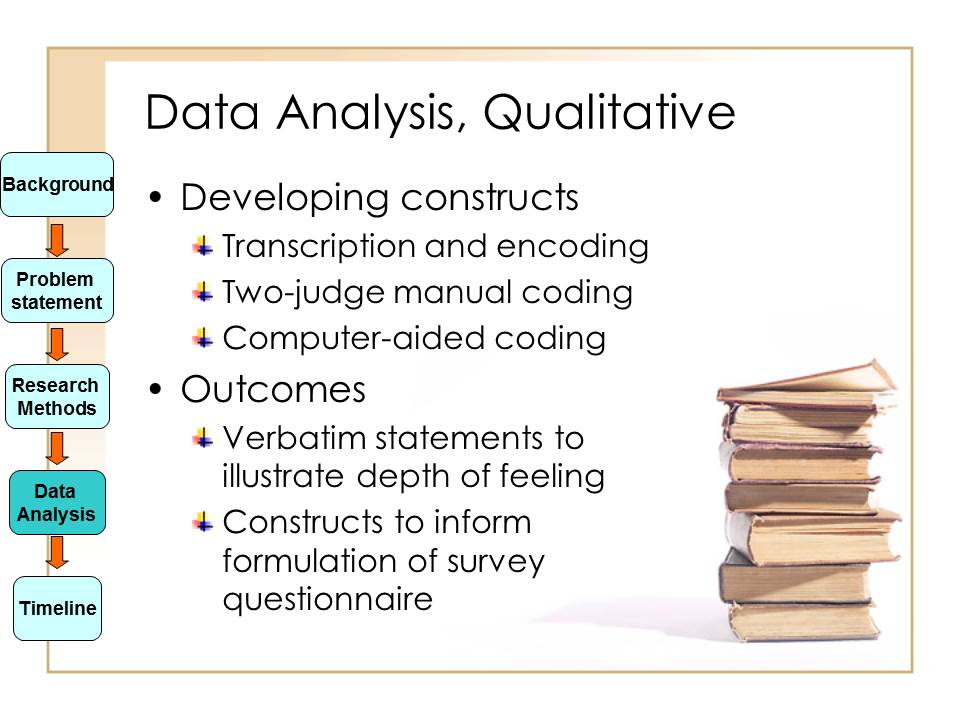
Data Analysis, Survey Research

